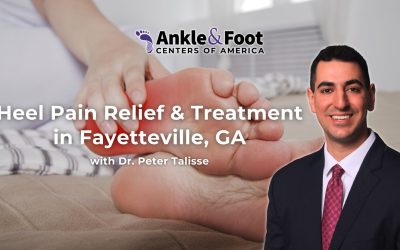Table of Contents
Introduction
Achilles tendonitis is a common condition that affects the largest tendon in your body, the Achilles tendon. It connects your calf muscles to your heel bone. When overused, it can cause pain, stiffness, and swelling in the back of the heel. Without treatment, Achilles tendonitis can worsen quickly, making daily activities difficult.
In this article, we’ll discuss effective Achilles tendonitis treatment options and helpful stretches for Achilles tendonitis. We will also explain Achilles tendonitis recovery time.
What is Achilles Tendonitis?
Achilles tendonitis occurs when the Achilles tendon becomes inflamed due to overuse, strain, or injury. The tendon connects the calf muscles to the heel bone, enabling activities like walking, running, and jumping. When overworked, this tendon can become irritated, causing pain, stiffness, and swelling near the back of the heel.
Typically, Achilles tendonitis develops gradually, especially in those who increase their physical activity too quickly. If untreated, it can worsen, making everyday movements more painful. Understanding this condition is key to finding effective treatments.
How to Treat Achilles Tendonitis
 Treating Achilles tendonitis starts with reducing inflammation and giving the tendon time to heal. First, rest is essential. Avoid activities that strain the tendon, such as running or jumping. Using the RICE method—rest, ice, compression, and elevation—can help manage pain and reduce swelling.
Treating Achilles tendonitis starts with reducing inflammation and giving the tendon time to heal. First, rest is essential. Avoid activities that strain the tendon, such as running or jumping. Using the RICE method—rest, ice, compression, and elevation—can help manage pain and reduce swelling.
In addition, over-the-counter anti-inflammatory medications can ease discomfort. Physical therapy is another important option. Specific stretches for Achilles tendonitis can improve flexibility and promote healing. Orthotic inserts or heel lifts may also relieve pressure on the tendon.
If these treatments don’t work, more advanced therapies may be necessary. Consult a specialist to explore additional options.
Achilles Tendonitis Treatment Options
There are several effective Achilles tendonitis treatment options, starting with non-surgical approaches. Resting the tendon, applying ice, and taking anti-inflammatory medications help reduce pain and swelling. Physical therapy is also key, as targeted stretches for Achilles tendonitis improve flexibility and promote healing.
For more support, orthotics or heel lifts can relieve tension on the tendon. If these methods don’t work, advanced treatments like platelet-rich plasma (PRP) therapy or extracorporeal shockwave therapy (ESWT) may be recommended. Surgery is typically considered only when conservative treatments fail.
Stretches for Achilles Tendonitis
 Incorporating stretches for Achilles tendonitis into your routine is crucial for recovery. These stretches help improve flexibility and reduce tension on the tendon.
Incorporating stretches for Achilles tendonitis into your routine is crucial for recovery. These stretches help improve flexibility and reduce tension on the tendon.
- Calf Stretch: Stand facing a wall with one foot behind the other. Keep your back leg straight and press your heel into the ground. Hold for 20 seconds and repeat.
- Heel Drop Stretch: Stand on the edge of a step. Slowly lower your heels below the step, feeling a stretch in your calves. Hold for 15-20 seconds.
- Resistance Band Stretch: Sit with your leg straight, and use a resistance band around the ball of your foot. Gently pull the band toward you for a deep stretch.
Consistently doing these stretches can ease discomfort and speed up recovery.
Achilles Tendonitis Recovery Time
The Achilles tendonitis recovery time varies depending on the severity of the injury. For example, mild cases may heal within a few weeks with proper rest, stretching, and treatment. However, more severe cases can take several months to recover fully. Therefore, consistent physical therapy and following medical advice are crucial to speeding up recovery.
If treated early, most people can return to normal activities within 6-8 weeks. On the other hand, severe cases, or those requiring surgery, may take 3-6 months for complete recovery. In conclusion, patience is key during the healing process.
Why Achilles Tendonitis May Not Be Healing
 Sometimes, Achilles tendonitis may not heal as expected. One reason is continuing activities that strain the tendon, which prevents it from recovering. Additionally, improper footwear can place excessive pressure on the tendon, worsening the condition.
Sometimes, Achilles tendonitis may not heal as expected. One reason is continuing activities that strain the tendon, which prevents it from recovering. Additionally, improper footwear can place excessive pressure on the tendon, worsening the condition.
In some cases, inadequate rest or skipping necessary Achilles tendonitis stretches can delay healing. For example, not following a consistent treatment plan may slow progress. Furthermore, underlying issues like poor circulation or chronic conditions can complicate recovery.
If Achilles tendonitis is not healing, it’s essential to consult a specialist. They can provide advanced treatments or consider surgery if necessary.
When to Consider Surgery for Achilles Tendonitis
Surgery for Achilles tendonitis is typically a last resort. For instance, if conservative treatments like rest, physical therapy, and medication haven’t improved the condition after several months, surgery may be necessary. In addition, surgery is considered when the tendon is severely damaged or if there are tears in the tendon.
Furthermore, patients experiencing chronic pain or mobility issues despite treatment might benefit from surgery. However, recovery from surgery can take several months, so it’s important to weigh the benefits carefully. Always consult with a specialist to explore the best options for your condition.

How Long Does It Take for Achilles Tendonitis to Heal?
The healing time for Achilles tendonitis depends on the severity of the injury. For mild cases, it may take about 6-8 weeks with proper treatment, including rest and physical therapy. However, moderate to severe cases may require several months to heal completely.
In some instances, recovery can be prolonged if the injury is not treated properly, or if the tendon is reinjured. If surgery is required, full recovery may take up to 6 months. Therefore, following a consistent treatment plan and avoiding strenuous activities are essential for a faster recovery.






